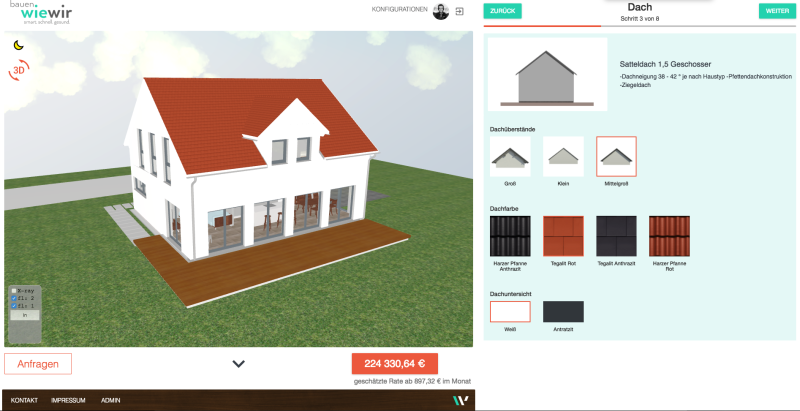Construction botch – for many builders a horror scenario that quickly bursts the sweet dream of owning a home. Understandable, because on average the cost of remedying any defects is more than €60,000, not to mention the additional stress that one had hoped to have finally left behind when moving into the house. In this article you will learn how to avoid bungling and defects in the construction.
The essentials in brief:
- A formal building inspection is your right as a builder, which you should use to rectify visible defects before you move in.
- Engage an independent surveyor to help with contract review and oversee the construction process.
What is construction botch?
Construction botch already occurs when the agreed target state deviates from the actual state . Unfortunately, this happens far too often and usually has annoying consequences. According to the “Haus & Grundbesitzer-Association”, 99% of all new buildings have construction defects. The associated costs are enormous: According to a report by the Bauherren-Schutzbund eV (BSB) from 2018, the costs for structural damage per dispute averaged €84,000, and the trend is rising. In addition, there are lengthy and nerve-wracking legal disputes. It gets particularly annoying with damage that can no longer be repaired afterwards. Load-bearing reinforced concrete walls that become crooked due to inadequate formwork are irreparable damage. (Learn how to avoid the most common house building hazards here.)
All this does not have to be! We at Almondia have summarized valuable tips on what you should do to prevent construction botches below:
What to do about botched construction?
First of all, of course, it is important to remain calm. A thorough inventory should then be carried out first. Document all construction defects as precisely as possible. You then create a so-called notice of defects, which lists all defects, requests them to be rectified by the service provider and is linked to a deadline (usually 14 days). The complaint should be made in writing, ideally by registered mail. Before all deficiencies have been remedied, parts of the invoice amount can be withheld. You can try to mobilize the service provider again with a grace period of another two weeks, which you should also send by registered mail. If the defect is still not remedied, you have the following legal options, from commissioning another service provider at the expense of the former to claiming damages. However, should it ever come to that, we recommend that you seek professional assistance.
How do you protect yourself from construction botch?
Ideally, of course, there will be no mess on your construction site in the first place. To protect yourself from this as best as possible, consider our tips:
1. Never do without a formal building inspection!
With the formal acceptance of the building work, you as the client have one last means of exerting pressure. If significant defects are discovered here again, you have the right to refuse the building inspection and to request that they be rectified. After the correction, another acceptance is carried out. Only now – and only if all defects have actually been remedied – should you make the final payment. Of course, reputable construction companies carry out a formal acceptance test. (We explain how you can recognize a reputable construction company in our article Finding a suitable construction company – with these 6 criteria .)
2. Keep an eye out for contracts!
When it comes to construction contracts, you should be aware of all the content and regulations. Since construction projects and all the associated legal conditions are very complex, an additional expert opinion is recommended here. Often, these contracts are not very transparent and contain, among other things, provisions that explicitly exclude disputes relating to house construction. In addition, you should pay attention to warranties, as these vary greatly. Don’t forget that more than half of all construction defects are discovered within the first three years after the building is handed over. (We’ve already prepared the top tips for spotting construction contract traps for you.)
3. Call in experts!
Only 1% of the construction projects are realized with their own architect or construction supervisor, who is involved in the planning and construction supervision. Do you remember the 99% defect rate in new buildings? The numbers are complementary and speak for themselves. Therefore, make sure that you consult an expert during the planning phase in order to make the construction plan as detailed as possible and leave no room for bungling. (You might also be interested in this: Do builders need building supervision? )



